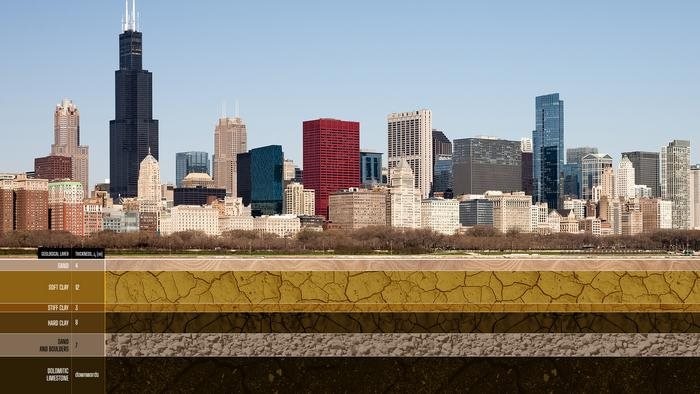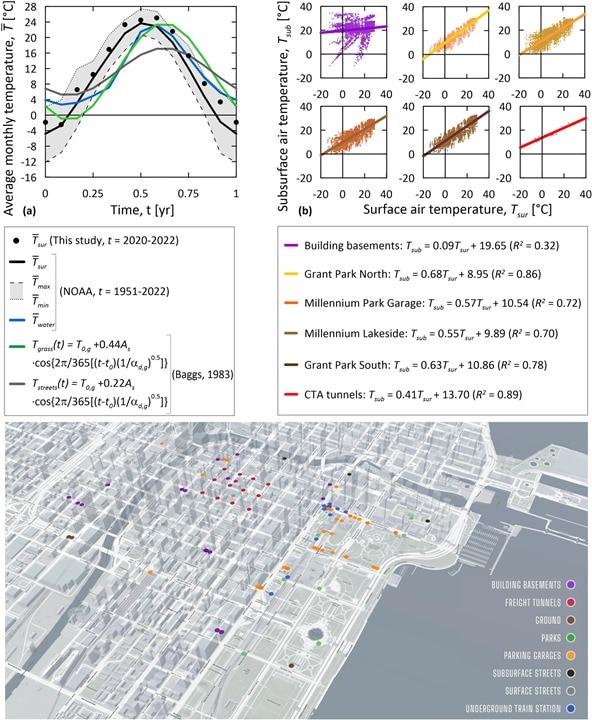
Geological layers underneath the Chicago Loop. (Image Credit: Alessandro Rotta Loria/Northwestern University)
According to a study by Northwestern University researchers, underground climate change has been linked to the shifting ground beneath major cities. The ground deforms when it heats up. Such a phenomenon causes structural damage due to the ground moving as a result of expansions and contractions. This also affects long-term durability and operational performance. The team also regards this as an opportunity to use geothermal tech to capture the underground waste heat, using it as an untapped thermal energy resource.
“Underground climate change is a silent hazard,” said Northwestern’s Alessandro Rotta Loria, who led the study. “The ground is deforming as a result of temperature variations, and no existing civil structure or infrastructure is designed to withstand these variations. Although this phenomenon is not dangerous for people’s safety necessarily, it will affect the normal day-to-day operations of foundation systems and civil infrastructure at large.”
Since 2019, the team placed a wireless network of over 150 temperature sensors above and below ground across the Chicago loop. They installed sensors in the basements of buildings, subway tunnels, subsurface streets, and underground parking garages. In addition, the researchers buried sensors in Grant Park for comparison purposes.

The temperature data across the Chicago Loop. (Image Credit: Northwestern University)
The data showed that underground temperatures beneath the Chicago Loop are ten degrees warmer than temperatures beneath Grant Park. Meanwhile, the air temperature in underground structures was 25 degrees warmer than the undisturbed ground temperature.
“We used Chicago as a living laboratory, but underground climate change is common to nearly all dense urban areas worldwide,” Rotta Loria said. “And all urban areas suffering from underground climate change are prone to have problems with infrastructure.”
Rotta Loria also developed a 3D computer model designed to simulate the ground temperature evolving process from 1951 to today. He discovered consistent field values and used the simulation to predict how the temperatures are expected to evolve until 2051. The simulations showed that warmer temperatures could make the ground swell and expand upwards by 12 millimeters. They could also make the ground contract and expand downward by as much as 8 millimeters. This may not seem like much, but it’s more than what the building components and foundation can handle without compromising operational requirements.
Geothermal technologies should be integrated to collect waste heat, distributing it to buildings for space heating. Planners could also install thermal insulation on new and existing buildings to reduce the amount of heat entering the ground.
“The most effective and rational approach is to isolate underground structures in a way that the amount of wasted heat is minimal,” Rotta Loria said. “If this cannot be done, then geothermal technologies offer the opportunity to efficiently absorb and reuse heat in buildings. What we don’t want is to use technologies to actively cool underground structures because that uses energy. Currently, there are a myriad of solutions that can be implemented.”
Have a story tip? Message me at: http://twitter.com/Cabe_Atwell
